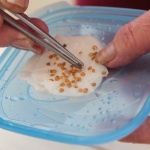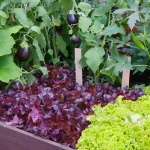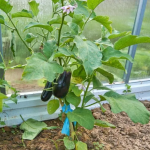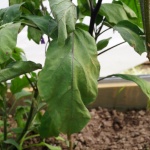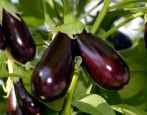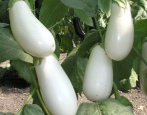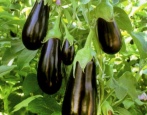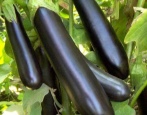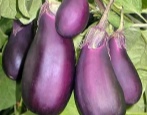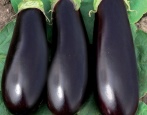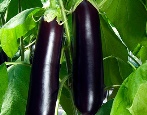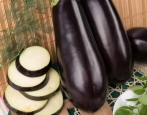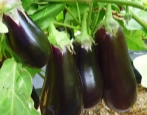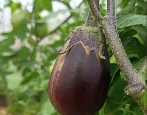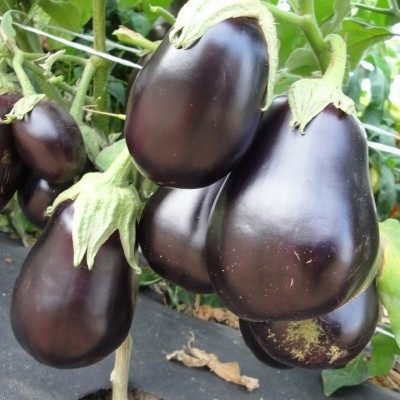
- Year of approval: 2001
- Bush height, cm: 150-180
- Fruit shape: oval
- Fruit weight, g: 238-350
- Yield: high yielding
- Fruit color: purple
- Keeping quality: suitable for long-term storage
- Transportability: adapted for long-term transportation
- Marketability: 97-100%
- Ripening terms: very early
Despite the huge variety of eggplant varieties, gardeners and farmers distinguish a list of favorites for themselves. These include the Nutcracker hybrid with very early ripening.
Breeding history
The nutcracker is a variety obtained thanks to the efforts of scientists of the agricultural firm "Russian-Ogorod-NK" in 1998. Included in the State Register of Admitted Vegetables after three-year variety trials - in 2001. A vegetable crop was created for cultivation in the northern and central regions. Eggplant is cultivated in open ground, under a film shelter, as well as in professional heated greenhouses.
Description of the variety
The Nutcracker hybrid is a medium-sized plant, which, under favorable conditions, can grow up to 150-180 cm.On garden ridges, the plant stretches up to 100-110 cm.The bushes are characterized by: semi-sprawling branches, medium thickening with dark green foliage, a powerful central stem with moderate studdedness and a developed root system. A distinctive feature of the variety is the abundant presence of thorns on the cups.
During the flowering period, the eggplant bushes are decorated with medium light purple five-petalled flowers. A large number of ovaries are formed on the bushes, therefore, the fruiting period of the culture is extended.
Characteristics of the appearance of plants and fruits
The Nutcracker represents the category of large-fruited eggplants. Vegetables ripen neat, leveled. On average, eggplant gains weight from 238 to 350 grams. Some vegetable growers managed to grow specimens of the Nutcracker weighing up to 600-700 grams. The length of the fruit is 12-14 cm. The shape of the vegetable is oval, sometimes pear-shaped or spherical. The nutcracker's rind is thick, firm, with a smooth and shiny surface, without ribbing or tuberosity. Ripe eggplants have a uniform dark purple color. There are few seeds in the eggplant pulp.
The removed vegetables can be transported over long distances. In addition, eggplants have a long shelf life, in which taste and marketability are not lost.
Purpose and taste
The nutcracker is remembered for its excellent taste. The white-creamy flesh has a fleshy, dense, buttery consistency without fibrillation. The fruit has a classic taste - with mushroom notes and a pleasant aroma. There is no bitterness and wateriness in the pulp.
Nutcracker eggplants have a universal purpose - they are fried, stewed, pickled, baked, frozen, and canned.
Ripening terms
This hybrid is early maturing. The growing season lasts only 98-105 days. Ripening of fruits is gradual, even in stages - from the bottom of the bush to the top. A feature of the culture is long-term fruiting. Yields peak in July-August. You can evaluate the taste of the first vegetables in the first half of July.
Yield
The yield indicators of the hybrid are good, but directly depend on the weather conditions. As a rule, in greenhouses the yield is higher - about 20 kg per 1 m2, and on garden beds - an average of 12.8 kg / m2. About 4-5 kg of fleshy eggplants can be removed from 1 bush per season.
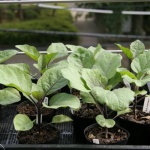
To get a tasty and bountiful eggplant crop, you must first grow strong and healthy seedlings. This culture is considered very capricious, therefore, you need to take care of seedlings when growing at home as correctly and carefully as possible.
Landing scheme
When cultivating a vegetable, it is important not to forget about planting density, as well as the distance between plantings. It is recommended to place up to 4-5 eggplant bushes per 1 m2. Landing is carried out according to the scheme 60x40 cm.
Growing and care
The culture is grown mainly by the seedling method. For this, strong bushes are selected with a height of 20-23 cm (age 60-65 days), with 8-10 true leaves and a formed rhizome. Planting in a greenhouse and garden beds is carried out in early June, sometimes in the last days of May.
Nutcracker eggplants, like most of their relatives, will need standard care, consisting of frequent watering with settled water (once a week), mineral and organic fertilizing every 3 weeks, weeding and loosening of the soil, periodic mulching using hay or straw, if the roots of the plant bare, the formation of bushes in 2-3 stems, their garters to the trellises, pinching the top (when the central trunk has grown to 30-35 cm), prevention of fungal diseases.
In addition, there is a need to adjust the load on the plant by removing excess ovaries, leaving 5-8 fruits. In the greenhouse, you also cannot do without ventilation, which will allow you to control the level of humidity.
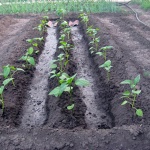
Planting eggplant is one of the most important stages in growing. When choosing a place for eggplants on your site, it is important to remember that this culture should be in warm soil, constantly illuminated by the sun. The plant is also very fond of spacious, open spaces, since its roots can grow over sufficient areas.
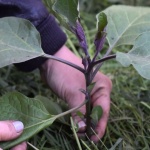
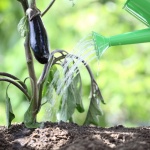
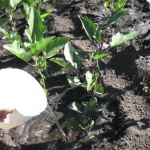
Soil requirements
It is comfortable to grow a vegetable in light, fluffy, nutritious, moderately moist and breathable soils with a neutral level of acidity.
Required climatic conditions
The nutcracker has good stress resistance, therefore it is able to withstand temperature fluctuations, short shade. You need to plant eggplant in a sunny area, where there is a lot of heat, light, there is good air circulation, as well as a protective barrier against drafts.
Disease and pest resistance
The plant has an average immunity, so it can be exposed to late blight, root rot and the tobacco mosaic virus.

Eggplant is one of the most demanding crops. For its successful cultivation, it is necessary to create optimal conditions, as well as to carry out prevention and fight against diseases and pests. Eggplant often infects both fungal and viral diseases. If treatment is not started on time, you can completely lose the crop.
